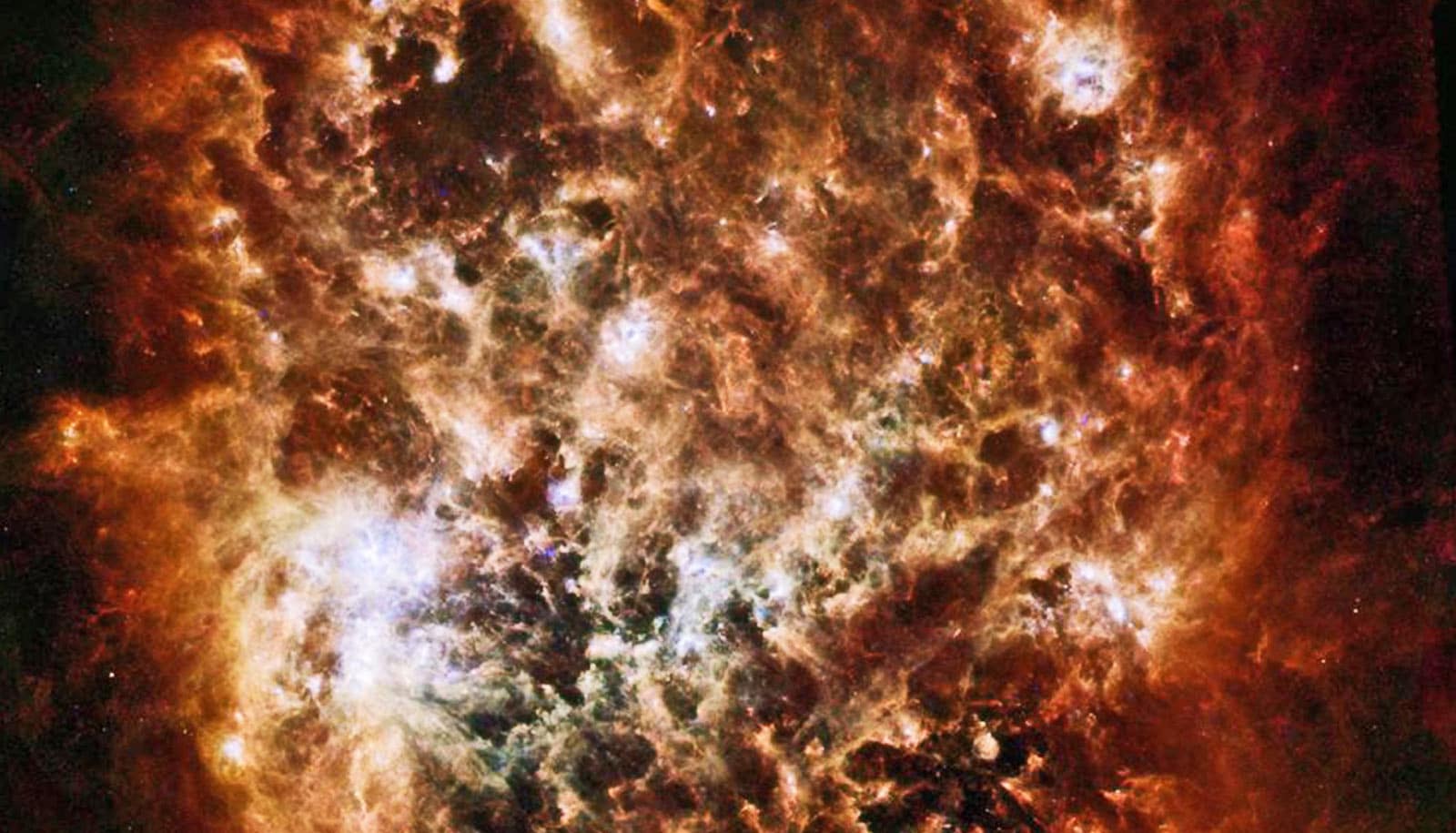New research helps explain a mysterious phenomenon, whereby stars suddenly vanish from the night sky.
The study of an unusual binary star system has resulted in convincing evidence that massive stars can completely collapse and become black holes without a supernova explosion.
One day, the star at the center of our own solar system, the sun, will begin to expand until it engulfs Earth. It will then become increasingly unstable until it eventually contracts into a small and dense object known as a white dwarf.
However, if the sun were of a weight class roughly eight times greater or more, it would probably go out with a huge bang—as a supernova. Its collapse would culminate into an explosion, ejecting energy and mass into space with enormous force, prior to leaving behind a neutron star or a black hole in its wake.
While this is basic knowledge about how massive stars die, there remains plenty to understand about the starry skies above and the spectacular death of these stars in particular.
The new research presents the strongest evidence to date that very massive stars can succumb with far more stealth and discretion than as supernovae.
Indeed, their investigation suggests that, with enough mass, a star’s gravitational pull can be so strong that no explosion takes place upon its death. Instead, the star can go through what is known as a complete collapse.
This discovery is linked to the phenomenon of disappearing stars, which has interested astronomers in recent years, and it may provide both a clear-cut example as well as a plausible scientific explanation for phenomena of this kind.
“Were one to stand gazing up at a visible star going through a total collapse, it might, just at the right time, be like watching a star suddenly extinguish and disappear from the heavens,” says Alejandro Vigna-Gómez of the Max Planck Institute for Astrophysics. “The collapse is so complete that no explosion occurs, nothing escapes, and one wouldn’t see any bright supernova in the night sky.
“Astronomers have actually observed the sudden disappearance of brightly shining stars in recent times. We cannot be sure of a connection, but the results we have obtained from analyzing VFTS 243 has brought us much closer to a credible explanation.”
No sign of explosion
This discovery has been prompted by the recent observation of an unusual binary star system at the edge of our galaxy called VFTS 243. Here, a large star and black hole roughly 10 times more massive than our sun orbit one another.
The researchers have analyzed the observational data for a range of signs that would be expected from a star system having undergone a supernova-explosion in the past. Generally, they found evidence of such an event minor and unconvincing.
The system does not show sign of a significant “natal kick”, an acceleration of the orbiting objects. It is also very symmetrical, almost perfectly circular in its orbit, and remaining signs from the energy release during the core collapse of the former star points to a type of energy consistent with complete collapse.
“Our analysis unequivocally points to the fact that the black hole in VFTS 243 was most likely formed immediately, with the energy mainly being lost via neutrinos,” says Irene Tamborra, a professor from the Niels Bohr Institute, who also participated in the study.
Gazing ahead
According to Tamborra, the VFTS 243 system opens the possibility for finally comparing a range of astrophysics theories and model calculations with actual observations. She expects that the star system will be important for studying stellar evolution and collapse.
“Our results highlight VFTS 243 as the best observable case so far for the theory of stellar black holes formed through total collapse, where the supernova explosion fails and which our models have shown to be possible,” says Tamborra.
“It is an important reality check for these models. And we certainly expect that the system will serve as a crucial benchmark for future research into stellar evolution and collapse.”
The study is published in the journal Physical Review Letters.
Additional researchers are from the University of Copenhagen; the Max-Planck-Institut für Astrophysik, Garching, Germany; the Institute of Astronomy, KU Leuven, Leuven, Belgium; Monash University; The ARC Centre of Excellence for Gravitational Wave Discovery—OzGrav, Australia; Center for Computational Astrophysics, Flatiron Institute; the University of Arizona; the University of Washington; the Technical University of Munich, TUM School of Natural Sciences, Garching, Germany; European Southern Observatory; Tel Aviv University, Tel Aviv, Israel; Aalborg University, Aalborg, Denmark.
Source: University of Copenhagen



